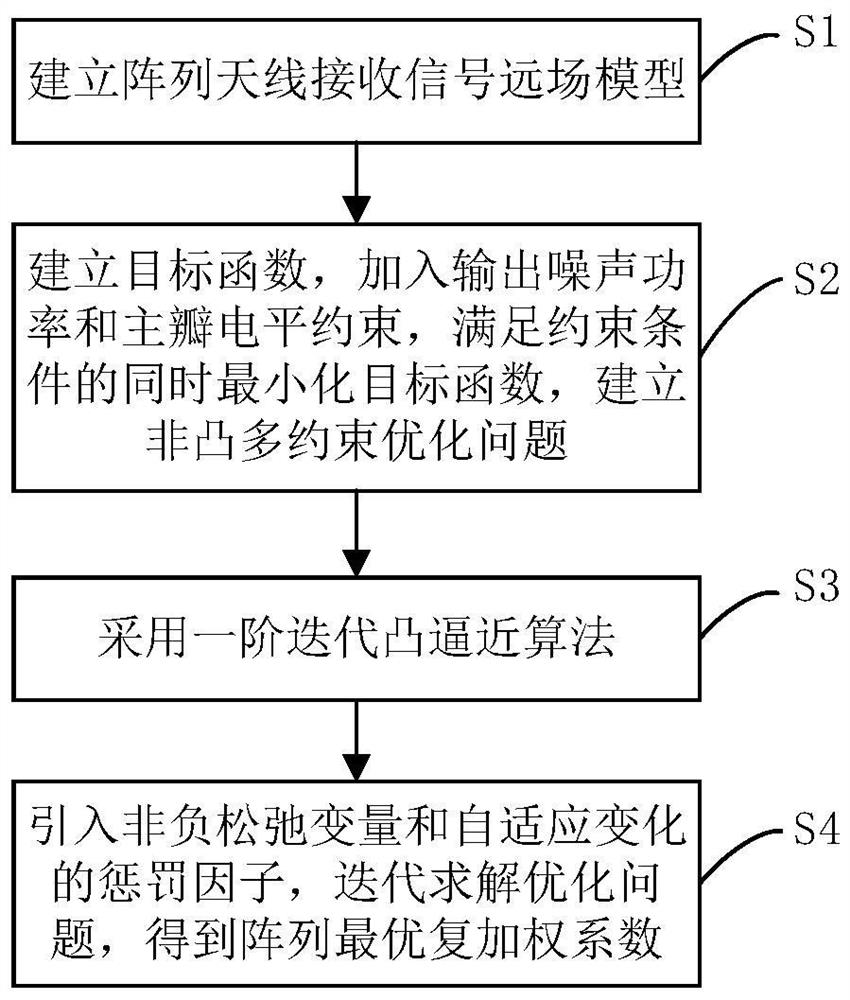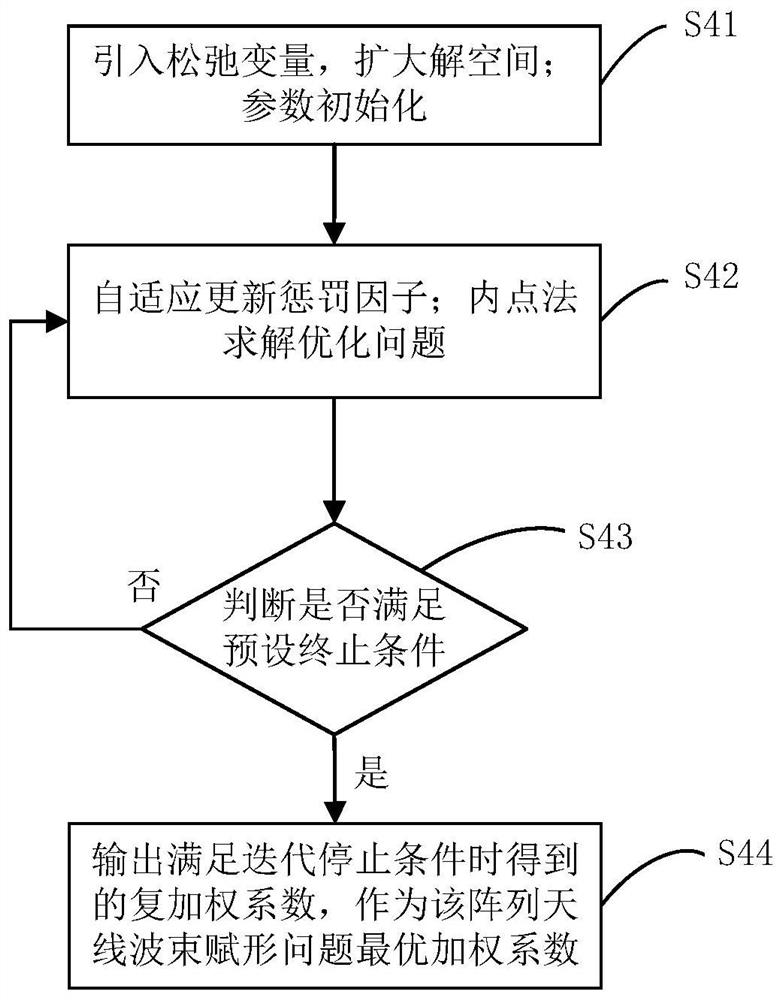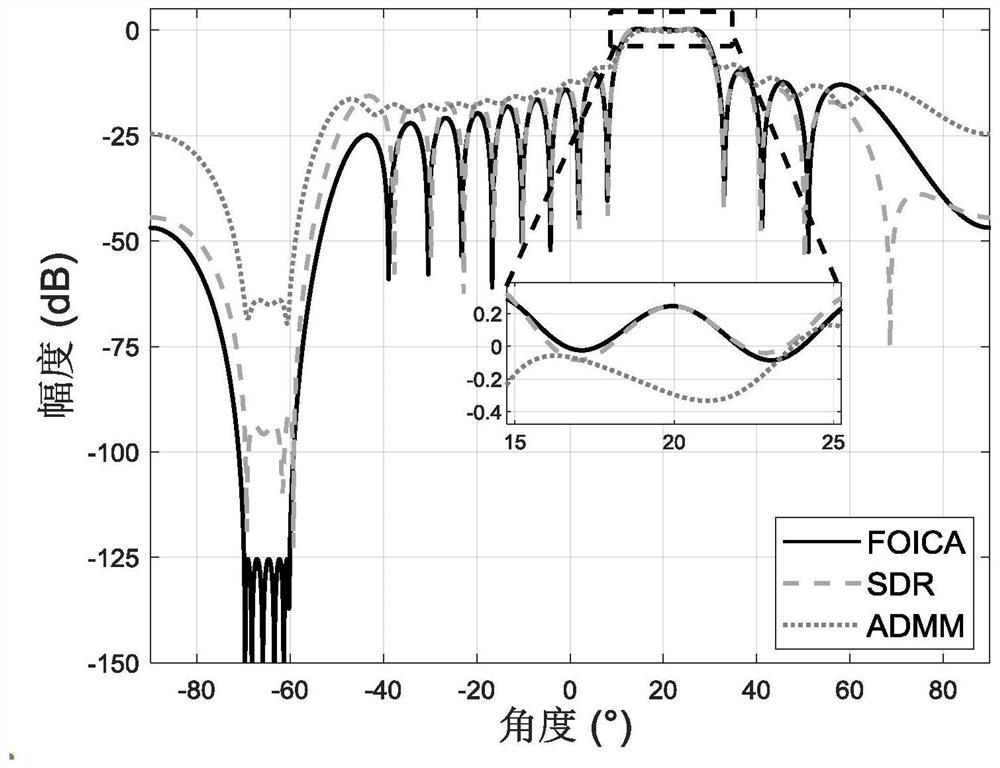Array antenna beam forming optimization method under non-convex multiple constraints
An array antenna and beamforming technology, which is applied in the field of array antenna beamforming optimization, can solve the problems that the convergence of the algorithm cannot be guaranteed theoretically, and achieve the goal of reducing the parameter adjustment process, low sidelobe level, and fast convergence speed Effect
- Summary
- Abstract
- Description
- Claims
- Application Information
AI Technical Summary
Problems solved by technology
Method used
Image
Examples
Embodiment 1
[0113] Embodiment 1: The number of isotropic uniform linear array (Isotropic Uniform Linear Array, IULA) array elements is N=20, the array element interval is half wavelength, and the array element radiation coefficient g n (θ)=1, the main lobe interval is θ m =[15°,25°], the side lobe area of interest is θ s =[-70°,-60°], the upper and lower bounds of the main lobe level are constrained to α(θ m )=7.5dB,β(θ m )=8.0dB, penalty factor for adaptive change Maximum Tolerable Error gamma 1 =0.999,γ 2 = 1.001. Compare the FOICA algorithm and SDR, ADMM algorithm that the present invention adopts, wherein, the auxiliary variable parameter δ=3.95×10 in the SDR algorithm -3 , the maximum number of iterations set in the ADMM algorithm is K=2×10 4 , the penalty factors for the main lobe and side lobe regions are set to κ=50, ζ=10, respectively.
[0114] image 3 It is the normalized pattern corresponding to the optimized complex weighting coefficients obtained by using the t...
Embodiment 2
[0118] Embodiment 2: The number of array elements of nonisotropic linear random array (Nonisotropic Linear Random Array, NLRA) is N=20, and the main lobe considers an angle θ m = 20°, the sidelobe area of interest is θ s =[-60°,-50°], the upper and lower bounds of the main lobe level are constrained to α(θ m )=-47.43dB,β(θ m )=-47.13dB, penalty factor for adaptive change Maximum Tolerable Error gamma 1 =0.999,γ 2 =1.001, the array element radiation coefficient function g n (θ) is expressed as:
[0119]
[0120] Among them, the radiation source direction and length parameter l involved n ,ξ n and array spacing d n parameter settings (d n , l n In units of wavelength λ, ξ n in degrees) as shown in Table 1.
[0121] Table 1
[0122] n d n (λ)
l n (λ)
ξ n (°)
n d n (λ)
l n (λ)
ξ n (°)
1 0.00 0.27 -2.70 11 4.92 0.22 4.32 2 0.46 0.29 4.36 12 5.42 0.28 2.63 3 0.94 0.22 1.83 13 5.88 0.22...
PUM
 Login to View More
Login to View More Abstract
Description
Claims
Application Information
 Login to View More
Login to View More - R&D
- Intellectual Property
- Life Sciences
- Materials
- Tech Scout
- Unparalleled Data Quality
- Higher Quality Content
- 60% Fewer Hallucinations
Browse by: Latest US Patents, China's latest patents, Technical Efficacy Thesaurus, Application Domain, Technology Topic, Popular Technical Reports.
© 2025 PatSnap. All rights reserved.Legal|Privacy policy|Modern Slavery Act Transparency Statement|Sitemap|About US| Contact US: help@patsnap.com



